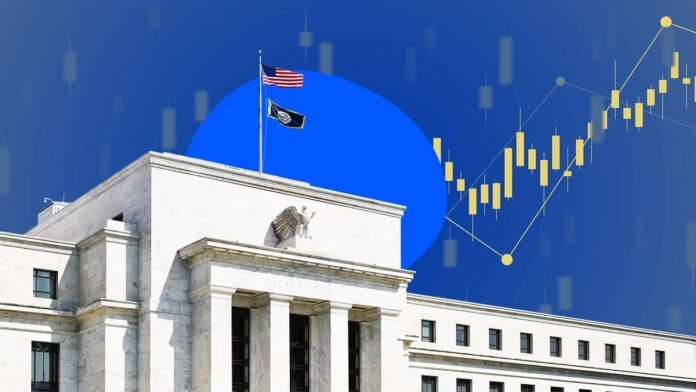By now, nearly everyone in the global markets is well-acquainted with the concept of interest rates remaining elevated for an extended period of time.
In the near future, it is probable that they will encounter another significant idea in relation to comprehending central bank policy: the concept of less-for-longer quantitative tightening (QT).
This statement outlines the Federal Reserve’s plan to systematically decrease its holdings in order to reverse the significant bond purchases made during the covid-19 epidemic.
The company anticipates that adopting a strategy of reducing expenses over an extended period of time will result in a final balance sheet that is smaller than it would have been otherwise.
This may all appear really technical.
Undoubtedly, according to a metaphor favored by Federal Reserve officials, monitoring QT should be as uneventful as seeing the drying process of paint.
However, if the dullness persists, it would have significant ramifications, as it would establish balance-sheet expansion and contraction as a fundamental strategy in central banks’ efforts to prevent financial crises.
While other monetary authorities are currently engaged in quantitative tightening (QT), the Federal Reserve holds a prominent position in this experiment as the central bank of the world’s largest economy.
Since the beginning of current round of quantitative tightening (QT) in mid-2022, the Federal Reserve has already decreased its assets by around 16% to $7.5 trillion.
Current drop is slightly larger than the previous attempt at QT from 2017 to 2019, which occurred after the global financial crisis of 2007-09 (see to the graphic).
However, its balance-sheet is still over 80% greater than it was in early 2020.
Further reducing its size would provide the Federal Reserve with greater flexibility to increase it again through the acquisition of bonds (often referred to as quantitative easing) in the event of another financial crisis.
Successfully achieving this without causing market crashes would also address critics who perceive quantitative easing (QE) as a driver of inflation and inflated asset values.
The exact optimal size for the central bank’s holdings remains unknown to both Federal Reserve officials and other individuals.
The key metric to consider is not the assets shown on the balance-sheet, but rather the liabilities, specifically the reserves held by commercial banks.
These reserves increase in response to the central bank’s bond purchases during quantitative easing (QE).
The objective of the Federal Reserve is to restore banks to a state of “sufficient” reserves, which is lower than their current level of “excessive” reserves.
Prior to the pandemic, these reserves accounted for around 10% of their total assets.
Currently, they constitute approximately 15%.
Due to more stringent financial regulations, analysts at Goldman Sachs, a bank, believe that a suitable liquidity level would be approximately 12%.
This suggests that the Federal Reserve may have the intention of reducing the size of its balance sheet by an additional $500 billion.
The Federal Reserve is currently relying on market signals to guide its decisions, without adhering to any specific aim.
Specifically, it is monitoring whether the interest rates for banks’ overnight loans exceed the rate at which it compensates them for their reserve amounts.
This suggests that the availability of liquid assets has significantly decreased, indicating tighter liquidity circumstances.
The financial disturbances in the money market during the fall of 2019, which involved a sudden increase in the costs of short-term funding, caused the Federal Reserve to abruptly stop its previous round of quantitative tightening (QT).
On this occasion, it has successfully evaded any form of instability.
After reaching this point, policymakers now want to decelerate their asset reduction, in the belief that doing so will minimize the possibility of market disturbance and, consequently, maximize the gradual decrease of their balance sheet.
Given Jerome Powell’s recent assurance as the chairman of the Federal Reserve to commence the process of tapering quantitative tightening (QT) in the near future, it is reasonable to speculate that the Fed will unveil its plans for tapering after its upcoming meeting on May 1st and initiate the process in June.
Presently, the Federal Reserve is abstaining from selling securities, instead allowing a maximum of $95 billion to gradually decrease off its balance-sheet on a monthly basis.
A tapered QT may result in a roll-off that is almost half as steep.
The conclusion of the prolonged period of quantitative tightening (QT) is that the Federal Reserve is likely to persist in reducing its assets for the remainder of this year.
Consequently, it may simultaneously contract its balance-sheet (i.e., implement monetary tightening) while lowering interest rates (i.e., implement monetary loosening).
Paradoxical as it may seem, investors are expected to incorporate a significant portion of the effects of tapering quantitative tightening (QT) into their pricing once the Federal Reserve announces it.
Regardless, the overall observation is that the central bank’s reduction of its balance sheet has had minimal impact thus far, which is in stark contrast to the volatility experienced in 2019 and the market reaction known as the “taper tantrum” in 2013, when the Federal Reserve initially mentioned its intention to reduce asset purchases.
“Individuals are becoming increasingly accustomed to considering balance-sheet instruments, and the Federal Reserve is becoming more accustomed to effectively communicating them,” states William English, a former economist at the Federal Reserve. Observing the process of paint drying is tedious. However, a skillfully painted wall might be aesthetically pleasing.
(The headline and the story has not been edited by THND staff and is published from a syndicated feed. However there can be minor changes from the original source article.)
Further Reading :
- https://www.economist.com/finance-and-economics/2024/04/04/the-federal-reserve-cleans-up-its-money-printing-mess#:~:text=This%20phrase%20describes%20how%20the,would%20otherwise%20be%20the%20case.
- https://www.bloomberg.com/opinion/articles/2021-05-28/fed-is-mopping-up-its-own-mess-in-reverse-repo
- https://www.economist.com/finance-and-economics/2023/02/09/the-federal-reserves-25trn-question
- https://www.investopedia.com/articles/economics/10/understanding-the-fed-balance-sheet.asp
- https://ycharts.com/indicators/us_total_assets_held_by_all_federal_reserve_banks




